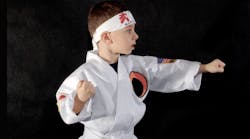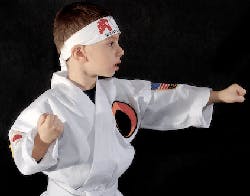In the movie, a young boy named Daniel Larusso is being picked on and needs to learn how to defend himself against the bullies. A wise elderly gardener by the name of Mr. Miyagi starts to educate and train young Daniel with some karate skills by assigning him a large amount of chores. Larusso doesn’t realize that by repeating these moves while painting and waxing, he’s developing the needed skills to defend himself. In essence, Miyagi is allowing his young student to learn the necessary skills through his own experiences and hands-on work. Because of the repetitive nature of these deliberate hand movements, Daniel is developing good habits, and these learned skills pay off when he defeats the bullies from the Cobra Kai Dojo. Sorry if I ruined the ending.
So let’s talk safety.
I’m a big proponent of teaching and educating workers by actually conducting hands-on training when it comes to safety related topics. I believe this method of training through experience, when attempting to change safety habits, is far more effective than simply telling someone how he or she should work. Many of you are probably saying “duh” right now, but how many times do we call a safety meeting, throw on a PowerPoint, ask if there are any questions (and there usually aren’t), make sure everyone puts their John Hancock on the sign-in sheet and then send our workers about their business on the field? Sounds familiar, doesn’t it?
A gentleman by the name of Robert W. Pike, an internationally recognized expert in human resources development, has conducted adult training seminars focusing on the principles of adult learning, referred to as Pike's Laws of Adult Learning.
Pike’s Laws:
- Adults are babies with big bodies (reference Piaget's Theory of children learning through experience).
- People do not argue with their own data.
- Learning is directly proportional to how much fun you are having.
- Learning has not taken place until behavior has changed.
I tend to agree with these laws. I mean, think about it. Do you learn more if someone tells you how to achieve a specific task, or if they actually take the time to show you how to properly achieve that same task? Remember: “Give a man a fish and you feed him for a day. Teach a man to fish and you feed him for a lifetime.” Totally something Mr. Miyagi would say.
Maybe like the second law, you have your workers develop or create ideas for working safely. They’re much more likely to remember data they developed, or think they developed themselves, than they are to remember what a safety officer or piece of paper with a bunch of safety procedures says.
If you look at Pike’s third law, I think we all can agree that a fun and enjoyable work environment is a great way to develop work relationships. Once we become emotionally connected with the people we work alongside, we’re more likely to share experiences and help out our fellow coworkers. We want to protect each other.
And of course, you can’t be a safety professional if you haven’t heard of the behavior-based safety concept. This ideal of changing the behavior of workers will result in the safety training and knowledge being practiced in the workplace or on the job site. You have to want to be safe, instead of being told to be safe.
Try something like this: Have your employees show you the proper way to set up an extension ladder. Let them give you ideas of a safe way to tie off the ladder to increase stability. Maybe create some sort of contest for your workers regarding ladder safety. That’s a great way to make it fun. Putting all these efforts together may result in the behavior of your workers changing. If you can accomplish this feat, you now will see the benefits in the work performed.
For me, I never actually turned out to be the All Valley Tournament Karate Champion like Mr. Larusso, but once I decided to become a safety professional, I have had to become a little bit more like Miyagi. We ultimately strive to protect our workers from danger, and what better way to achieve this goal than to allow our employees the opportunity to learn through hands-on training and experiences to develop those good habits?
“Wax on, wax off.”

